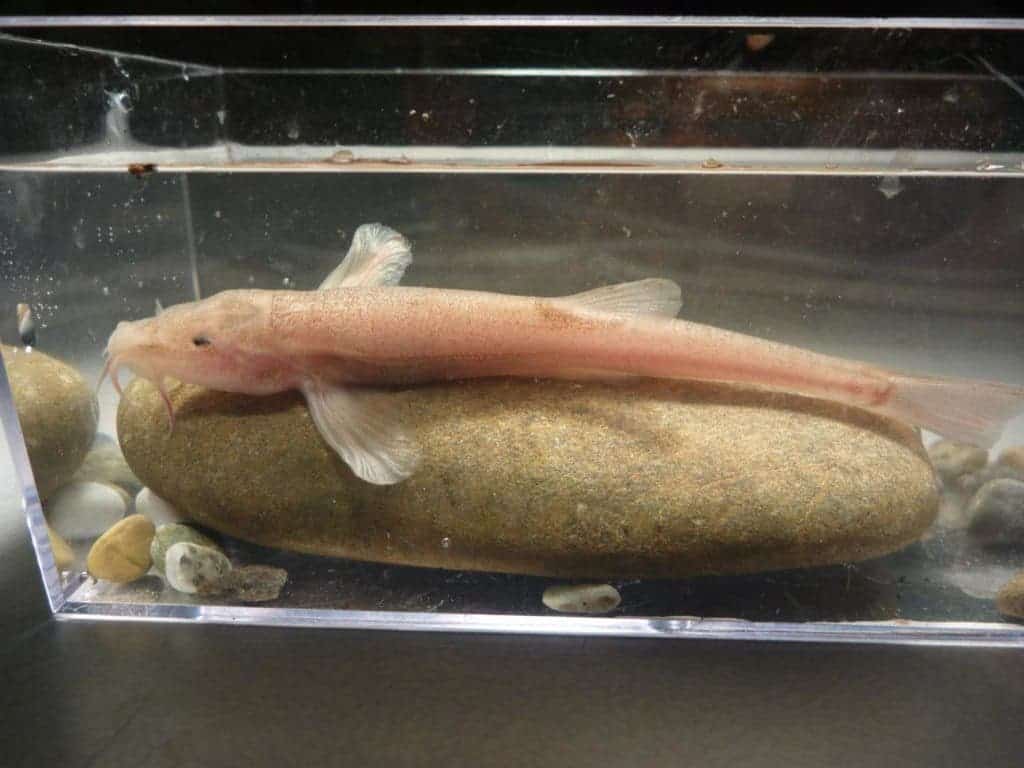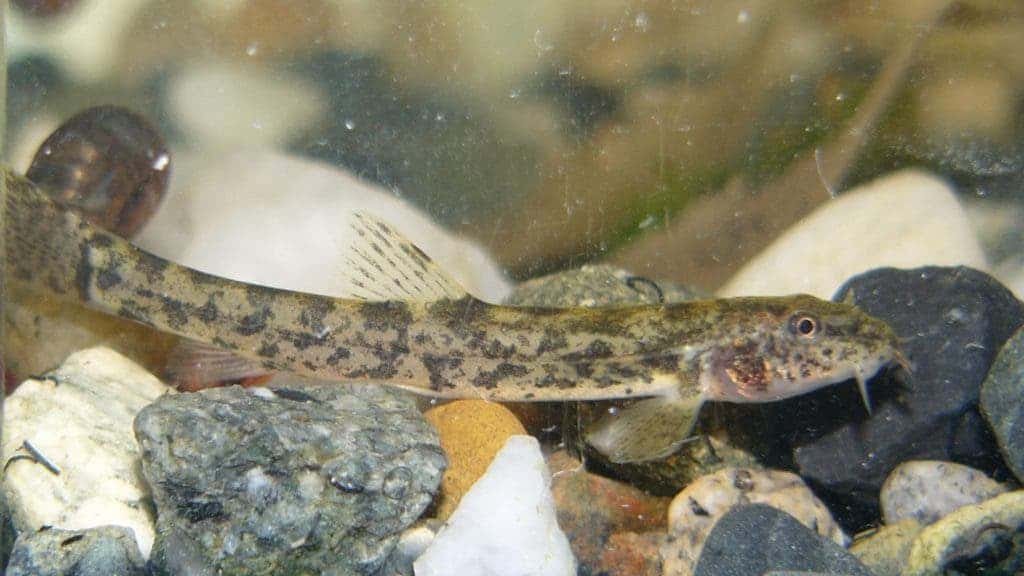Caves are pretty tough places to live in, they are completely dark and there isn’t very much food. Nonetheless, a few animals have wandered in from the surface and stayed. They undergo special adaptations to live in caves. Actually, almost all cave fauna share the same traits: reduced or no eyes, pale colouration, and other features. Crustaceans, amphibians, insects, arachnids, and fish all live in caves and have these features. The approximately 170 species of cave fish were found on every continent except for Antarctica and Europe. Now, scientists have found the first ever cave fish in Europe, it is also the most northern cave fish ever found.

Deep below
The hobby diver Joachim Kreiselmaier first saw the fish in August 2015, in one of the deepest parts of the Danube-Aach cave system. He took photos of it and later got in touch with researchers at the University of Konstanz. The caves where the fish live are very difficult to reach, which is why they have only been discovered now.
“No more than 30 divers have ever reached the place where the fish have been found,” Kreiselmaier says. “Due to the usually bad visibility, strong current, cold temperature, and a labyrinth at the entrance, most divers do not come back again for diving.”

Luckily Kreiselmaier was persistent and went back several more times to catch five fish that the researchers were able to study. They found that the fish is a loach in the genus Barbatula and is closely related to the stone loaches (Barbatula barbatula) that live in surface waters.
Cave fish
Fish that are found in caves aren’t necessarily cave fish, they could have wandered in by accident. Cave fish are specially adapted for life in caves and wouldn’t survive well outside of them. These loaches have some adaptations that are typical for cave fish. Cave fish usually lose their pigmentation, sight, scales, and swim bladder. Indeed, these cave loaches have much smaller eyes, elongated whisker-like barbels, larger nostrils, no scales, and a pale colour.

Becuase of few genetic changes on one particular gene region that is known to evolve slowly, the cave fish have separated from the stone loaches relatively recently. Other regions of the fish’s DNA are different enough for them to be characterized as different species. According to genetics, as well as the age of the caves, the cave loach has evolved in the past 20,000 years. Around that time, some stone loaches came into the caves, stayed, and adapted especially to live in caves. In evolutionary terms, this is very quick! It should be taken with a grain of salt that these are true cave fish. Usually, cave animals evolve for around a million years. Since a few thousand years is such a short period of time, these fish have likely not evolved all of the traits to be true cave fish yet, but are on the way to becoming specialized.
In the north
“The cave fish was found surprisingly far in the north in Southern Germany,” says Jasminca Behrmann-Godel of Germany’s University of Konstanz. “This is spectacular as it was believed before that the Pleistocene glaciations had prevented fish from colonizing subterranean habitats so far north.”
Another reason why this new cave fish is special is that it is the most northern cave fish found. It lives 760 km further North than the previous record holder, the Pennsylvanian cave sculpins. The loaches entered the cave system after the last ice age; alpine glaciers melted and allowed the fish to colonize the new area. Before this discovery, it was thought that Pleistocene glaciations prevented fish from colonizing caves north of 41° latitude. Clearly, fish were able to enter this habitat and evolve after these glaciers melted.
“It was only when the glaciers retreated that the system first became a suitable habitat for fish,” says Arne Nolte from the University of Oldenburg/Max Planck Institute for Evolutionary Biology, Plön.
It’s true that the researchers had a very small sample of fish, but that is often a problem when dealing with cave animals. There aren’t so many of them to begin with and they are hard to sample. The cave loaches are genetically different from surface stone loaches and have evolved relatively recently. They probably don’t have all of the features of true cave fish yet. More work definitely needs to go to see how adapted to caves this fish is actually. This discovery goes to show that new species can be discovered even in places that are well-explored.
Journal reference: Behrmann-Godel et al. “The first European cave fish,” Current Biology.


